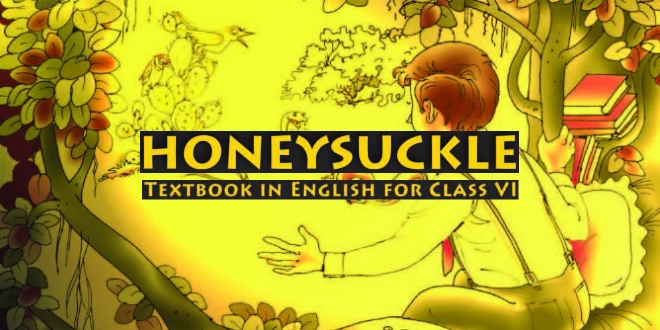Desert Animals: NCERT 6th CBSE Honeysuckle English Chapter 09
Question: 1. Talk to your partner and say whether the following statements are true or false.
- No animal can survive without water.
- Deserts are endless sand dunes.
- Most snakes are harmless.
- Snakes cannot hear, but they can feel vibrations through the ground.
- Camels store water in their humps.
2. Answer the following questions.
- How do desert animals survive without water?
- How do mongooses kill snakes?
- How does the hump of the camels help them to survive when there is no water?
Desert Animals – Answer:
1.
- No animal can survive without water. True
- Deserts are endless sand dunes. False
- Most snakes are harmless. True
- Snakes cannot hear, but they can feel vibrations through the ground. True
- Camels store water in their humps. False
2.
- Desert animals cannot survive without water. They find different ways of coping with the harsh desert conditions. For example, gerbils spend the hottest part of the day in cool burrows. And darkling beetles catch moisture on their legs and then lift them into the air till the drops trickle down into their mouths.
- A mongoose kills a snake by dodging each time the snake strikes. They continually make a nuisance of themselves, until, after a while, when the snake gets tired, it quickly dives in for the kill.
- When there is no water, the hump of a camel helps it by acting as a storage container.
Question: Read the words / phrases in the box. With your partner find their meaning in the dictionary.
Harsh conditions harmless survive intruder threatened predators prey continually
Fill in the blanks in the following passage with the above words / phrases.
All animals in forests and deserts struggle to ______________ in ______________ ______________ . Though most of the animals are ______________ , some are dangerous when ______________ . If an ______________ is noticed, they attack or bite to save themselves. They struggle ______________ for food and water. Some animals are called ______________ because they ______________ on other animals.
Answer: All animals in forests and deserts struggle to survive in harsh conditions. Though most of the animals are harmless, some are dangerous when threatened. If an intruder is noticed, they attack or bite to save themselves. They struggle continually for food and water. Some animals are called predators because they prey on other animals.
Question: A. Look at these sentences.
- Most snakes are quite harmless, but a few are poisonous.
- Most snakes lay eggs, but the rattlesnake gives birth to its young.
Now write five sentences like these using ‘most’ and the clues below.
- (90% of) people are honest (10%) are dishonest.
______________________________________ ______________________________________ - (Lots of) fruit have plenty of sugar, (some) citrus fruit are low in sugar.
______________________________________ ______________________________________ - (Every soft drink except this one) has lots of ’empty calories’.
______________________________________ ______________________________________ - (The majority of) films are romances, (a few) are on other topics.
______________________________________ ______________________________________ - (A majority of) people agree that he is a good leader, (just a few) disagree.
______________________________________ ______________________________________
Desert Animals – Answer:
- Most people are honest, but about ten percent are dishonest.
- Most fruits have plenty of sugar, but some citrus fruits have less sugar.
- Most soft drinks have lots of ‘empty calories’, but this one does not have ‘empty calories’.
- Most films are romances, but a few are on other topics.
- Most people agree that he is a good leader, but a few disagree.
Question: Look at these sentences.
- Animals cannot survive for long without water.
- So desert animals have to find different ways of coping.
The first sentence says what cannot happen or be done; the second tells us what must, therefore, be done, what it is necessary to do.
Complete these sentences using cannot and have to / has to.
- You _____________ reach the island by land or air; you _____________ go by boat.
- We _____________ see bacteria with our eyes; we _____________ look at them through a microscope.
- He _____________ have a new bicycle now; he _____________ wait till next year.
- Old people often _____________ hear very well; they _____________ use a hearing aid.
- Road users _____________ do what they wish; they _____________ follow the traffic rules.
- She _____________ accept this decision; she _____________ question it.
- You _____________ believe everything you hear; you _____________ use your own judgement.
Answer:
- You cannot reach the island by land or air; you have to go by boat.
- We cannot see bacteria with our eyes; we have to look at them through a microscope.
- He cannot have a new bicycle now; he has to wait till next year.
- Old people often cannot hear very well; they have to use a hearing aid.
- Road users cannot do what they wish; they have to follow the traffic rules.
- She has to accept this decision; she cannot question it.
- You cannot believe everything you hear; you have to use your own judgement.
Question: Deserts have a very thin population. Why?
Answer: Deserts have very little water and vegetation. There is greenery only around the water springs or oases. So people don’t prefer to live there.
Question: What are some of the notable features told about snakes in the lesson?
Answer: There are more than 2300 different kinds of snakes in the world. Some are up to 11 metres long. Not all are poisonous. Most snakes lay eggs, but many of them give birth to their young.
Question: Where are rattlesnakes found?
Answer: Rattlesnakes are very common on the American continent. They feed on mice and rats etc.
Question: What does the author tell about mongooses?
Answer: Mongooses are very amusing animals to watch. They are a common sight in Africa. They eat beetles and other small creatures. They themselves are eaten up by hawks, eagles and large snakes. They are famous for killing snakes.
Desert Animals – Question: What do you learn in the lesson about camels?
Desert Animals – Answer: Camels live mainly in the desert. They can drink up to 30 gallons of water in just ten minutes. They get all the moisture they need from desert plants. Some camels have only one hump, others have two. Humps are full of fat which is used as food.
Question: How do you define or describe a desert? Name some common desert animals. How do they survive?
Answer: A desert is a very hot and dry place that goes without rain even for years. It is sandy with hardly any vegetation or villages. There is neither water nor greenery. Still some animals are found there. For example, gerbils, beetles, snakes, mongooses and camels. These animals survive the harsh conditions in their own way. Some live in burrows (holes). Camels have winter coats to keep warm and shorter, tidier coats to keep cool in summer.
Question: What information about snakes do you get in the lesson Desert Animals?
Answer: There are more than 2300 different kinds of snakes around the world. Some are harmless, others very poisonous. Some lay eggs, while others give birth to the young one. The rattler lives in the day and rocky deserts of America. Large pythons can go without eating for a year or more. Mongooses are famous for their skill in killing snakes. A camel can drink up to 30 gallons of water in just ten minutes. It eats plants. Its humps store fast-food.
Desert Animals – Question: What are some of the particular habits of the mongoose and the camel?
Desert Animals – Answer: Mongooses like to hunt together. But they are afraid of their enemies like hawks, eagles and snakes. They warn others of the danger by their peculiar calling. They are famous for killing snakes.
Camels were taken as pets long, long ago. They have long or short coats to keep them warm or cool. A camel can drink up to 30 gallons of water at a time. Its humps-single or double-store food that is used as food. They are adapted to desert life.
 Class Notes NCERT Solutions for CBSE Students
Class Notes NCERT Solutions for CBSE Students


